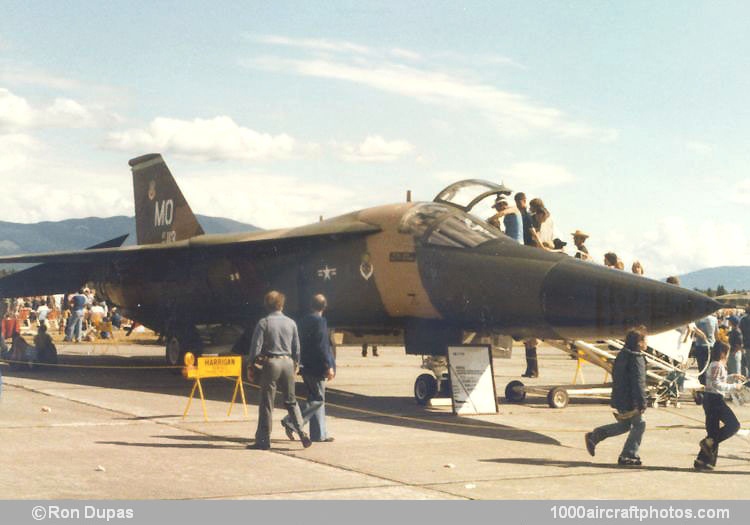12/22/2006. Remarks by Bob Hopkins: "At first I didn't like the F-111. Coming from the single seat, single engine, high testosterone and somewhat relaxed flying environment of the F-100, it was a big adjustment. I transitioned into the F-111 in the summer of 1970. I was in the first class at Nellis AFB, Las Vegas, Nevada, USA from the 20th TFW at RAF Upper Heyford, England to convert from the F-100 to the F-111. I didn't like the poor visibility, the need for a second person, the emphasis on level bombing, the restriction on strafing and the fish bowl visibility on every move we made in the plane in those years.
As I got used to things, I began to like the plane more and more, however. I liked the true all-weather capability with the TFR, the great speed, the 32,500 lb (14,742 kg) of internal fuel, the bomb carrying capacity, the baggage carrying capacity, the inertial navigation system's accuracy, the autopilot, the ECM systems and even the Weapons System Officer who came in handy at times.
I used to fly functional check flights (FCF's) for maintenance. On these flights I'd had to check out the plane at high speeds. If I remember right, I'd climb to about 30,000 ft (9,144 m) at normal speeds checking out other systems on the way then go to afterburner and accelerate to 660 knots (760 mph, 1,222 kmh) indicated airspeed. By now the wings were swept fully back to 72.5° and we were doing about 1.2 mach. The profile was to maintain 660 knots in a climb untill I ran out of the supersonic airspace in which I was cleared to fly. Also, we couldn't go above 50,000 ft (15,240 m) without pressure suits on. I used to fly these missions in either the A or the E models as that's what we had at Nellis AFB at the time.
During the supersonic climb, the true airspeed and the mach would both increase so that at 50,000 ft I would still have a 16,000 ft (4,877 m)/min rate of climb and be accelerating through about mach 2.3with a true airspeed of about 1200 knots (1,381 mph, 2222 kmh) . I often wondered how high and fast the plane would have gone. I know 55,000 ft (16,764 m) and 2.5 mach were no problem. Had I been in the "F" model with 20-25% more thrust we probably would have done mach 3 or darn close to it.
My last assignment was as commander of the 431st Test and Evaluation Squadron at McClellen AFB, California, USA. This was the Air Force's F-111 operational test squadron and at the time (1979-82) we were working on the Pave Tack system for the F-111Fs. This was an infra-red/laser designating pod that retracted into the weapons bay pod when not in use. During the first Gulf War the F-111s used this to great advantage. They destroyed more vehicles and tanks than any other weapons system but didn't get much credit for it because the Air Force was hyping the F-15E Strike Eagle at the time and the F-111 was practically on its way out by then. It's a shame it got retired because when it did, it was at the peak of it capabilities."
